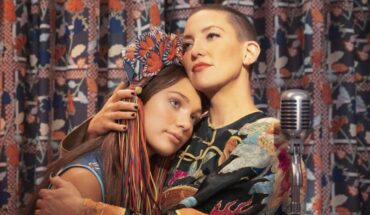College students reflect on 90’s Movies and TV
BY BASMA HUMADI, STAFF WRITER
College students run on a nostalgia for the yesteryear entertainment of the late 90s and early 2000s. This was a time when the average vocabulary included “Zetus Lapetus” and The Cheetah Girls did nothing but make straight bops while representing every elementary schooler’s idea of what “squad goals” looked like. The original “Pokemon: Indigo League” with Ash, Misty and Brock was airing on Cartoon Network, Ja Rule and Ashanti were still making hits together and Pixar was in its early and golden ages.
While great entertainment, the trinity of children’s television networks—Disney Channel, Nickelodeon and Cartoon Network—each had their own way of portraying positive messages. Cartoon Network had a knack for making nuanced dark premises for television shows that taught kids important messages, such as in “Foster’s Home for Imaginary Friends” and “Courage the Cowardly Dog.”
Nickelodeon had heavy shows, such as the sophisticated “Avatar: The Last Airbender,” and shows conveying the absurdities of teenage life and adulthood in “Spongebob Squarepants,” “Zoey 101” and “Ned’s Declassified School Survival Guide.”
Disney Channel was at its peak for good television shows and movies in the 90s and early 2000s. There were shows like “That’s So Raven,” “Kim Possible” and “The Proud Family,” and it aired Disney Channel Original Movies like “The Color of Friendship,” “Halloweentown” and “Cadet Kelly.”
Disney Channel jumpstarted the careers of many of the megastars we know today: Shia LaBeouf, The Jonas Brothers, Selena Gomez, Demi Lovato and Miley Cyrus. If you’re counting The All New Mickey Mouse Club, which aired from 1989-94, the list expands to Justin Timberlake, Ryan Gosling, Britney Spears and Christina Aguilera.
Simply by explaining “Foster’s Home for Imaginary Friends,” anyone can see the underlying dark themes it carries. The show centers on an orphanage where imaginary friends reside after being abandoned by their owners. Once his mother forces him to abandon his imaginary friend Bloo, an eight-year-old boy named Mac comes to the foster home every day to ensure Bloo won’t get adopted. The show deals with the sensitive issue of abandonment and teaches kids to remain imaginative.
All the characters living in the foster home deal with their own issues. Wilt, a tall, red imaginary friend, has one right arm and a crooked eye and left his owner after fearing his owner’s disappointment after his owner was injured while losing a crucial basketball game. Eduardo, a big and hairy purple creature, was created by a young girl, Nina, to protect her in a dangerous neighborhood, yet Eduardo is scared of almost everything. The characters all operate as one big family and distort their own stereotypes.
“Spongebob Squarepants,” though completely absurd and mindlessly entertaining, does contain underlying themes and a keen portrayal of the mundanities of life, like getting off at the wrong stop and getting stuck in “Rock Bottom,” a place where no one speaks your language and everything is confusing. Even former President Obama admitted he watches the show with his daughters and that Spongebob is his favorite TV character.
The show is about a yellow sponge living underwater in a pineapple house. He is an underpaid fry cook with a stingy boss named Mr. Krabs. Spongebob also lives next door to and works with Squidward, a bitter and arrogant squid. He also has a starfish and squirrel, who lives underwater, for best friends. Yet Spongebob is overly optimistic about everything.
Squidward foils Spongebob’s character and is everything Spongebob is not. Whereas Spongebob is punctual, optimistic and hard-working, Squidward is unmotivated, pessimistic and essentially hates everyone. Yet Squidward’s character provides a keen insight into the pitfalls of adulthood by representing adults stuck in mediocre jobs they hate that grow to hate everyone around them. Growing up, no one wants to be a Squidward, but as college students, his bitterness becomes more relatable.
Although “Spongebob Squarepants” continued to stay on Nickelodeon after its comedic aspects went astray, its early years were definitive and appealing. Spongebob deals with the pressure of trying to make friends in the episode he rips his pants, withstanding the unreasonable demands of customer service in the episode he goes to lengths to deliver a pizza only to be turned away by the customer, and displaying the tiring work of parenting when he and Patrick take care of a baby scallop. It was ridiculous and hilarious, but it gave kids a funny and relatable commentary to keep in mind for things they would deal with growing up.
“The Color of Friendship,” a Disney Channel Original Movie, deals with two girls who come to understand each other amidst turbulent race relations in 1970s America. Piper, a black politician’s daughter from Washington D.C., and Mahree, a white South African blind to her own privilege, learn valuable lessons from each other once Mahree comes to the United States as an exchange student and lives in Piper’s home. The movie does not sugarcoat issues such as apartheid, race and police brutality.
“We are human beings. And if there is one thing that human beings have in common, it is the desperate need to be free,” Piper’s dad, played by Ron Dellums, says in the film. It’s surprising and groundbreaking. It is such an important and carefully crafted film, and it handled heavy issues with incredible sensitivity.
Disney Channel television shows often gave its female audience great role models to aspire to, like Kim Possible or Ren Stevens from “The Even Stevens Show.” “That’s So Raven” dealt with body issues, like when Raven is featured in a magazine wearing a dress she designed. “The Proud Family” featured an amusing black family and was one of the only TV shows to feature an episode where its main character, Penny, lives with a Muslim family and learns an important lesson about accepting other cultures. “Hannah Montana” taught the importance of living as an average teenager, as Miley chose to separate fame and her teen life in order to grow up in a normal environment.
It’s no wonder today’s college students can recite the plots of obscure episodes and movies from kids’ television with such keen memory. Nostalgia for the television they watched carries the weight of the lessons they learned from watching them.




